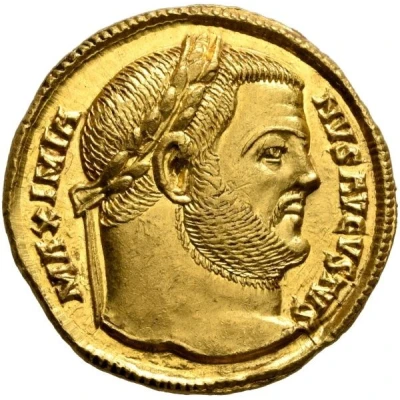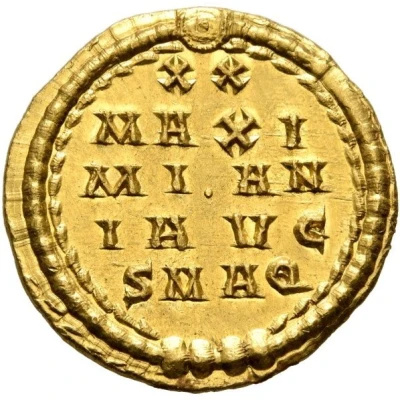


© Leu Numismatik
Aureus - Maximian XX MAXI MIAN I AVG SMAQ; Aquileia
| Gold | 5.22 g | 19 mm |
| Issuer | Rome › Roman Empire (27 BC - 395 AD) |
|---|---|
| Emperor | Maximian Herculius (Marcus Aurelius Valerius Maximianus) (286-305) |
| Type | Standard circulation coin |
| Years | 303-305 |
| Value | Aureus (10) |
| Currency | Argenteus, Reform of Diocletian (AD 293/301 – 310/324) |
| Composition | Gold |
| Weight | 5.22 g |
| Diameter | 19 mm |
| Shape | Round (irregular) |
| Technique | Hammered |
| Orientation | Variable alignment ↺ |
| Demonetized | Yes |
| Updated | 2024-10-05 |
| Numista | N#384754 |
|---|---|
| Rarity index | 100% |
Reverse
Legend within laurel wreath terminating in large jewel, mintmark in exergue.
Script: Latin
Lettering:
XX
MAXI
MIAN
I AVG
SMAQ
Comment
On 20 November 303, Diocletian and Maximianus celebrated their vicennalia, the twentieth anniversary of their accession to power. An important milestone in their careers, the event was prominently panegyrized throughout the empire on coins such as this beautiful aureus, and in imperial architecture such as the Five-Columns Monument on the Forum Romanum in Rome. It was likely also on this occasion that Diocletian made Maximianus promise to retire with him as part of the senior Augustus' new tetrarchic system, which intended to replace the two Augusti with the two Caesares every twenty years to avoid civil wars and dynastic rule. Maximianus complied, albeit apparently grudgingly, and withdrew from power together with Diocletian on 1 May 305, passing the torch to Galerius and Constantius I, respectively. With the latter's early death in summer 306 and the subsequent proclamation of his son Constantine to Augustus, however, Diocletian's tetrarchic system faced an early crisis, and while the young, ambitious son of Constantius I was reined in to some degree thereafter, he would eventually become the sole Augustus after his final victory over Licinius I in 324.Interesting fact
One interesting fact about the Aureus - Maximian (XX MAXI MIAN I AVG SMAQ; Aquileia) coin is that it features the first known use of the "XX" symbol to indicate the number 20. This symbol, which is still used today to represent the number 20 in Roman numerals, was a new innovation at the time and was introduced by the Roman Emperor Maximian in an effort to simplify the Roman numeral system.